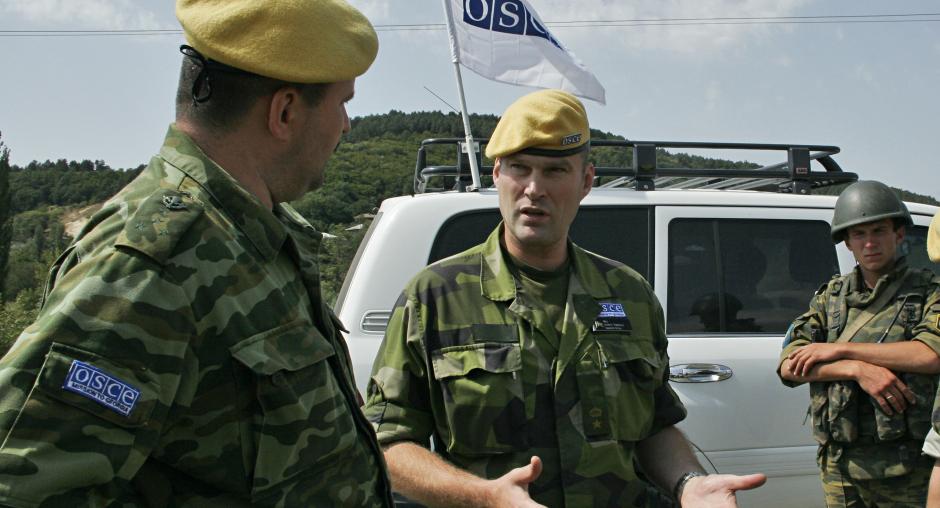Conflict resolution

Responding to crisis - immediate action for regional security
Following the outbreak of hostilities in Georgia in August 2008, the OSCE has worked intensively to contribute to reducing tension between the parties; to easing the humanitarian crisis; and to setting the conditions on the ground conducive to further political dialogue aimed at achieving a longer-term solution to the conflict.
Rapid consensus to boost monitoring of the security situation
Increasing the OSCE Military Monitoring Officers' presence on the ground is a significant element of the Organization's response to the issues relating to its regional security agenda.
On 19 August 2008 the OSCE Permanent Council in Vienna, striving to contribute to the full implementation of the 12 August six-point ceasefire agreement, agreed to increase the number of OSCE monitors in the Mission to Georgia up to 100. Twenty unarmed military monitoring officers recruited from OSCE participating States were deployed immediately to the areas adjacent to South Ossetia.
Unarmed, but equipped with military expertise and experience, the new monitors bring a wealth of experience from other tours of duty - including OSCE and UN assignments throughout the world - to add to the similarly rich portfolios of the eight already-serving OSCE monitors, who also have the unique advantage of experience of monitoring in and around South Ossetia.
On 12 February 2009 the OSCE participating States agreed by decision of the Permanent Council to extend the activities of the additional military monitors until 30 June 2009.
Accommodating to the challenges of a new task
The OSCE Mission to Georgia rapidly and effectively accommodated to the challenge of a new task, including by establishing a forward monitoring base near the Karaleti/Gori area. The Mission, with support of the OSCE Secretariat in Vienna, enhanced its logistical support for field activities, and efficiently assimilated new systems and equipment - including more armoured vehicles donated by participating States.
Steps were taken to redirect the activities of the OSCE-led Economic Rehabilitation Programme (ERP) into accessible areas affected by the recent conflict within the Shida Kartli Region. The transitional phase of the ERP was launched and 9 projects were successfully implemented between October 2008 and March 2009, benefitting a total of 329 farmers for 67 villages in the areas exposed to the August 2008 conflict.
The Mission assisted with the Geneva discussions on security and stability arrangements in Abkhazia and South Ossetia co-chaired by the European Union, the UN and the OSCE, which began in October 2008, as well as with the incident prevention and response mechanism agreed at the discussions.
A foundation of extensive experience on the ground
The OSCE Mission to Georgia has a unique experience of the Georgian-Ossetian conflict resolution process on the ground. Since 1993 the OSCE has been monitoring the security situation, engaging in field diplomacy, encouraging impetus in negotiations between the sides, and working on building confidence between the communities to help prepare the way for peaceful settlement of the Georgian-Ossetian conflict.
Prior to the recent fighting in August, the Mission had some 200 staff, including the eight unarmed military monitoring officers mandated to carry out continuous military monitoring and report back the facts to the OSCE Chairmanship and participating States in Vienna.
